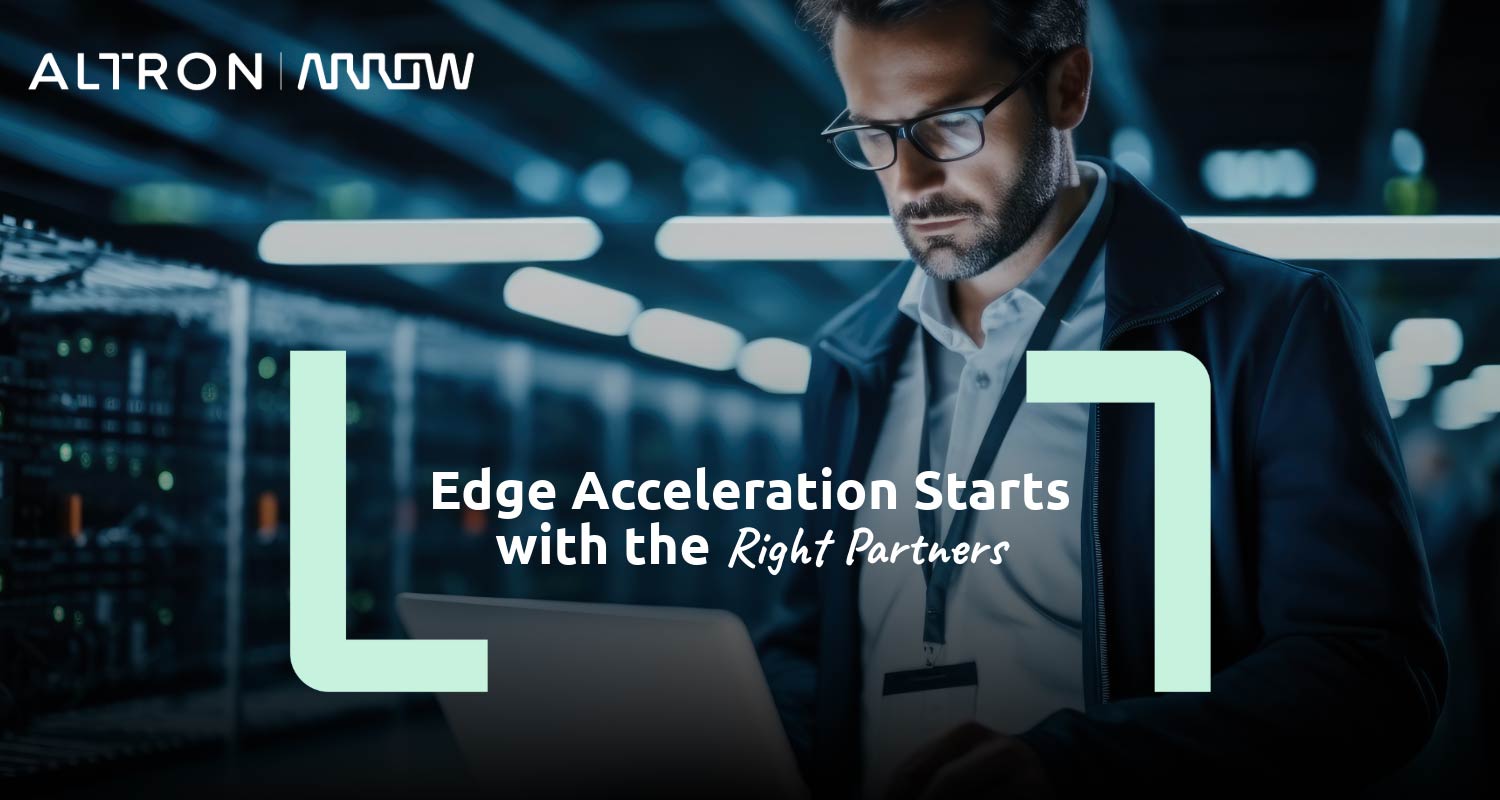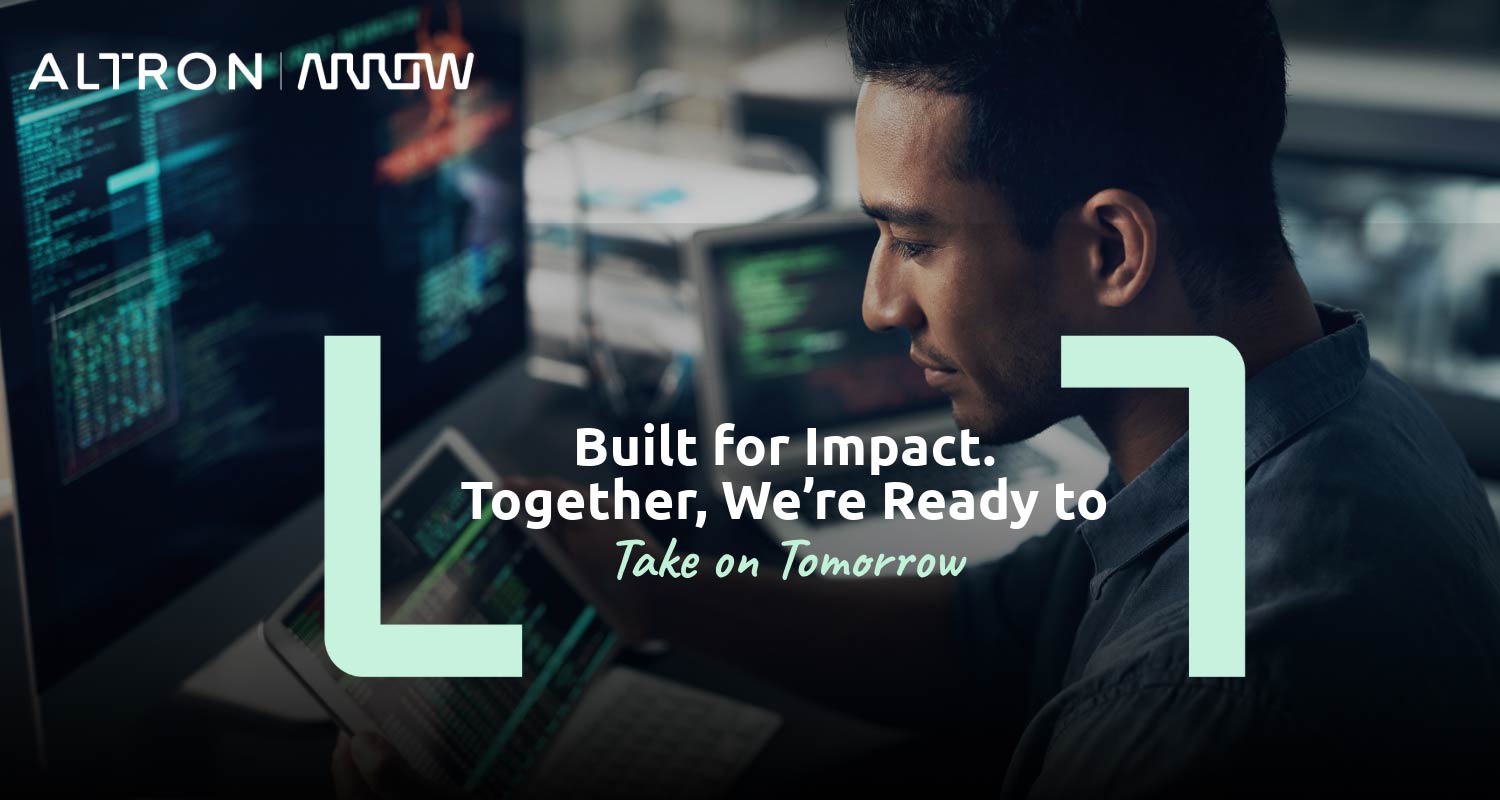The way businesses compute, connect and protect their environment is evolving. Traditional infrastructure silos are giving way to distributed networks, where cloud, edge and embedded systems must work in harmony.
Across Africa, organisations are under pressure to modernise operations, secure sprawling infrastructure and harness greater value from their data. But the biggest obstacle isn’t technology itself; it’s the fragmentation between systems, service providers and outcomes.
Discover the power of Altron Arrow’s Enterprise computing solutions
As infrastructure spreads across hybrid environments and the edge, CIOs and IT leaders face difficult questions:
- How do I secure everything without slowing innovation?
- How do I modernise legacy systems without disrupting operations?
- How do I find technology partners who understand both my industry and my realities?
These aren’t questions about products. They’re questions about integration, intelligence and trust.
Real transformation happens at the intersection of IT, OT and business goals
The lines between IT and operational technology have blurred, especially in industries such as manufacturing, retail, logistics and healthcare. Success in these environments doesn’t come from single-point solutions. It comes from building connected, intelligent ecosystems where data can move securely and decisions can be made in real time.
This shift has major implications: architectures must be designed with flexibility in mind; security must be built in, not bolted on; and compute power can no longer be centralised in data centres alone (it needs to live at the edge, close to the action).
Organisations need support to navigate these shifts without creating new silos or dependencies. That means technology partners who can design with context, not just deploy with speed.
 Edge computing isn’t a trend, it’s a necessity for real-time industries
Edge computing isn’t a trend, it’s a necessity for real-time industries
In sectors where milliseconds matter, latency isn’t just inconvenient – it’s a liability. Whether you’re monitoring power grids, optimising logistics routes or managing factory operations, localised processing at the edge enables decisions to happen when and where they’re needed most.
But as more organisations move towards edge-first strategies, new risks emerge. Distributed infrastructure means a wider attack surface. Standardisation becomes harder. Maintaining uptime requires local support and scalable architectures.
Enterprises don’t just need edge devices; they need edge strategies that consider security, scalability and cost-efficiency across the entire ecosystem.
Embedded systems are where intelligence meets the real world
We often think of transformation in the abstract: apps, analytics and dashboards. But innovation also lives in the physical. It lives in devices, machines and smart systems that interact with the real world.
Embedded systems are powering next-generation healthcare equipment, mobility solutions, energy management tools and more. Yet building these systems isn’t just about sourcing components. It’s about firmware design, regulatory compliance and long-term support.
Organisations need help bridging the gap between concept and commercialisation. More than ever, engineering support and lifecycle thinking matter as much as the silicon.
Integration and long-term support are make-or-break factors in transformation
One of the most overlooked risks in digital transformation is integration complexity. Deploying new platforms without aligning them with existing systems can lead to duplication, user fatigue and wasted spend.
That’s why enterprises are increasingly prioritising partners who can help connect the dots: not just between hardware and software, but between data and outcomes.
Support matters, too. African enterprises don’t always have the luxury of deep in-house tech teams or easy access to global suppliers. Local expertise, reliable turnaround and context-driven support make all the difference between a successful project and an abandoned pilot.
 Transformation isn’t about adopting the latest tech. It’s about unlocking intelligence across the enterprise and turning it into better decisions, faster response times and measurable growth.
Transformation isn’t about adopting the latest tech. It’s about unlocking intelligence across the enterprise and turning it into better decisions, faster response times and measurable growth.
Technology providers must move beyond transactions. The market needs strategic partners who understand industry challenges, provide long-term value and build for real-world outcomes, especially in Africa, where infrastructure limitations meet enormous innovation potential.
Cybersecurity has evolved from a technical layer to the strategic heart of business continuity
In the context of enterprise transformation, every digital decision, from cloud adoption to customer experience, now hinges on cybersecurity. As artificial intelligence becomes embedded in business operations, it introduces both powerful capabilities and new vulnerabilities.
AI-enabled threats such as AI-generated phishing attacks, autonomous malware and data manipulation are increasing in sophistication and scale, making traditional security approaches deficient.
To remain resilient, businesses must adopt a cybersecurity posture that is proactive, adaptive and intelligence driven. One that not only defends against known risks but also anticipates threats before they emerge. Without robust safeguards, businesses risk more than data loss; they face reputational damage, operational disruption and erosion of customer trust. In this AI-driven economy, the strength of your cybersecurity posture is not just a defensive measure but what defines the strength of your business.
Businesses need more than vendors. They need intelligent integration
African enterprises aren’t short on ambition. What they need are partners who recognise that transformation is complex, deeply human and grounded in real-world constraints. Success isn’t about adopting the latest technology; it’s about unlocking intelligence across the enterprise to drive smarter decisions, faster response and measurable growth.
What’s required are strategic partners who understand local trends, design for scale and deliver outcomes, especially in Africa where infrastructure challenges meet vast innovation potential.
This is the role Altron Arrow has stepped into with intent and clarity. With decades of engineering expertise, a global component backbone and deep experience across edge, embedded and enterprise computing, we’re helping design Africa’s digital future.
Our connected ecosystem unites secure computing, embedded intelligence, lifecycle support, futuristic AI and edge as well as cybersecurity and IoT security, not as standalone services but as an integrated foundation for enterprise resilience.
We’ve evolved our role in the value chain:
- From component supplier to capability partner
- From product provider to transformation enabler
- From distributor to trusted co-architect of digital success
Because, in Africa’s connected future, what matters most isn’t just the technology; it’s who helps you make it work.
Discover the power of Altron Arrow’s Enterprise computing solutions. Reach out to us for more information and see how we can help your business thrive.
About Altron Arrow
Altron Arrow is sub-Saharan Africa’s leading distributor of electronic components and IoT solutions, established in 1998 as a joint venture between Altron and Arrow Electronics. With access to over 140 local suppliers and 600 globally, Altron Arrow offers a comprehensive range of high-quality components. The company provides innovative IT solutions through its Enterprise Computing Solutions division, specialising in cloud computing, cybersecurity and IoT. Additionally, Altron Arrow manages end-to-end logistics with its supply chain solutions, ensuring seamless delivery, warehousing and technical support. Operating from a cutting-edge warehouse in Johannesburg, Altron Arrow is committed to excellence in distribution and customer service.
- The author, Akhona Nkalitshane, is business development manager at Altron Arrow
- Read more articles by Altron Arrow on TechCentral
- This promoted content was paid for by the party concerned



